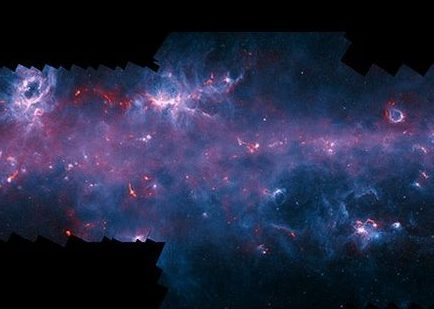
Two research masters positions in observational astrophysics are available under the supervision of Dr James Urquhart in the Centre for Astrophysics and Planetary Science at the University of Kent, Canterbury. The students will work on research topics related to high-mass star formation and the structure of the Milky Way.
These projects will utilise a number of ground breaking Galactic Plane surveys to investigate the formation of the most massive stars in the Milky Way. These surveys provide a detailed picture of the distribution and dynamics of the molecular gas, on scales of whole giant molecular cloud (GMCs) complexes (>100s pc) down to the scales of dense clumps (~1 pc), which is the fundamental star-forming unit. Combining these results with detailed studies of the star forming properties of dense clumps provides a physical link between star formation taking place on parsec scales and the large-scale dynamics of the Milky Way (kpc scales). Outlines of the projects available are given below:
- i) Triggered Star Formation: When high-mass stars arrive on the main sequence they begin to ionize their natal cloud leading to the formation of a HII region. High densities and temperatures drive the expansion of these bubbles of ionized gas into the surrounding medium. Material is swept up in front of the expanding ionizing gas leading to the formation of dense clumps that will subsequently collapse to form future generations of stars. This project identifies a large sample of HII regions and study the physical and star formation properties of clumps associated on their rims to evaluate the efficiency of this mode of triggered star formation.
- ii) Global Star Formation Laws: Studies of star formation in the local universe have identified some universal star formation laws (i.e., the Kennicutt-Schmidt law), however, due to the distances involved these are derived by averaging over regions of 100s of parsecs. Consequently, the underlying mechanisms that give rise to these laws are not well understood. This project will use high-resolution studies available for our own Galaxy to investigate the cause of these relations down to scales ~0.5 pc. This work will improve our understanding of these star formation laws and bridge the gap between Galactic and extragalactic astronomy.
Applicants need to have successfully completed an undergraduate BSc or MPhys course in Physics/ Astrophysics or related subjects with an upper second class degree or better. Programming experience (esp. Python) is highly desired. There is no deadline however we will start considering applications on Monday May 29th – applicants will be assessed on a rolling basis. The candidates are expected to be in place in September 2020.
For enquires about the projects please contact Dr James Urquhart: j.s.urquhart@kent.ac.uk
To apply please see: https://www.kent.ac.uk/courses/postgraduate/how-to-apply/